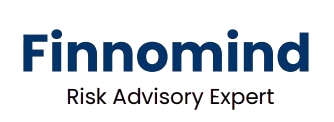
What is an IT Audit?
An IT audit is a systematic examination of an organization’s information technology systems, processes, and controls. The primary purpose of an IT audit is to assess the effectiveness and efficiency of these systems in supporting the organization’s business objectives. Through this comprehensive evaluation, an IT audit aims to identify potential risks, inefficiencies, and areas for improvement within the technology framework. This ensures not only that IT operations are running smoothly but also that they align with the overall governance structure of the organization.
The significance of IT audits in today’s digital landscape cannot be overstated. They serve as a critical tool for safeguarding data integrity and ensuring compliance with applicable regulations. An IT audit explores various aspects, such as data security, application controls, and network reliability, ultimately contributing to the overall risk management strategy of the organization. Compliance audits focus on verifying adherence to governmental regulations and industry standards, which are crucial for maintaining trust with stakeholders and clients.
Operational audits evaluate the efficiency and effectiveness of IT operations, examining how well the technology meets the organization’s needs. Security audits are specifically designed to assess an organization’s security posture, identifying vulnerabilities and determining the robustness of security controls against potential threats. By categorizing different types of audits, organizations can tailor their approaches to address specific concerns while enhancing their overall IT governance. In essence, IT audits are indispensable in promoting accountability, ensuring systems are efficient, and fostering a secure technological environment, thereby supporting sustained organizational success.
The IT Audit Process
The IT audit process involves a series of systematic steps designed to evaluate and improve an organization’s information technology systems. It begins with the planning phase, where auditors establish the scope and objectives of the audit. During this stage, it is crucial to collaborate with stakeholders to ensure all concerns are addressed. Clear communication helps align the audit’s goals with the organization’s strategic priorities. This phase sets the foundation for a successful audit by identifying the areas of greatest importance and associated risks.
Following planning, the audit transitions into the risk assessment phase. Here, auditors identify potential issues that could affect the systems under review. This includes evaluating existing controls, assessing vulnerabilities, and considering the impact of various risks on the organization’s overall operations. The aim is to prioritize areas that might require greater scrutiny during the audit execution phase. By being proactive in assessing risks, auditors can focus their efforts effectively, ensuring that critical systems are thoroughly evaluated.
The execution of the audit involves several key activities, including gathering evidence, evaluating controls, and conducting interviews with relevant personnel. This comprehensive approach allows auditors to assess the effectiveness of IT controls and any gaps that may exist. Gathering evidence can include reviews of documentation, system data, and practical observations of IT operations. Interviews provide additional insights, helping auditors to understand the daily practices and challenges faced by the IT team.
Finally, the reporting phase concludes the IT audit process. Auditors document their findings and provide recommendations for improvements based on the evidence gathered. The report is a critical tool for stakeholders, highlighting areas of success and outlining suggestions for mitigating risks and enhancing controls. Effective management of the IT audit process is essential, and organizations should strive to foster a culture of continuous compliance and improvement.
Best Practices for IT Audits
Implementing best practices is crucial for enhancing the effectiveness of IT audits. One significant practice is maintaining open communication channels between auditors and IT staff. Clear communication fosters collaborative relationships, allowing auditors to gain deeper insights into the organization’s technological frameworks and risks. This dialogue ensures that auditors fully understand the IT landscape, which is essential for identifying potential vulnerabilities or compliance issues effectively. Regular meetings, updates, and feedback sessions can bridge gaps and align objectives, making the audit process more efficient.
Establishing a continuous auditing process also plays a pivotal role in the overall effectiveness of IT audits. Rather than relying solely on periodic assessments, continuous auditing allows for real-time monitoring of IT systems and controls. This proactive approach enables organizations to detect and respond to breaches, anomalies, or compliance issues promptly. Leveraging automated tools for continuous assessment can enhance the accuracy of findings and reduce the workload for both auditors and IT teams, thereby ensuring a more dynamic and adaptive audit environment.
Leveraging technology is another best practice that can significantly improve the auditing process. Utilizing advanced data analytics, machine learning, and auditing software can help auditors analyze vast amounts of data quickly and efficiently. These technologies provide valuable insights and support informed decision-making, ultimately leading to more thorough and insightful audits. Furthermore, staying current on industry standards and emerging risks is essential for audit teams. Regular training and professional development ensure that auditors are equipped with the latest knowledge and skills, enabling them to navigate the evolving cybersecurity landscape and implement effective audit strategies.
In conclusion, by focusing on communication, continuous auditing, technology integration, and ongoing training, organizations can enhance their IT audit processes significantly. These best practices not only improve the effectiveness of audits but also contribute to a more secure and compliant IT environment.
Common Challenges in IT Audits and How to Overcome Them
IT audits are essential for ensuring that an organization’s information systems are secure, efficient, and compliant with relevant regulations. However, several challenges may arise during the auditing process. One common obstacle is resistance from staff, who may view audits as invasive or a critique of their work. This resistance can hinder the audit process and result in incomplete information. To overcome this challenge, organizations should foster a culture of transparency and collaboration, emphasizing the benefits of audits for both individual staff and the organization as a whole. Leadership support is critical; when leaders actively promote the auditing process and communicate its importance, employees are more likely to engage positively.
Another significant hurdle in IT audits is the often inadequate allocation of resources, which can include insufficient funding, tools, or personnel. When audits lack the necessary resources, the quality and accuracy of the assessment may suffer. To address this issue, organizations need to ensure that budgeting and planning for IT audits are prioritized. This may involve conducting a thorough needs assessment prior to the audit to identify essential resources, and obtaining leadership buy-in to secure the necessary investment. Additionally, utilizing technology and automation can improve auditing efficiency and minimize resource demands.
Rapidly evolving technologies also pose a challenge during IT audits, as the pace of change can outstrip the auditors’ familiarity with new tools, platforms, and security threats. To navigate this landscape, continuous professional development is vital for audit teams. By providing ongoing training and knowledge-sharing opportunities, organizations empower auditors to stay current with technological advancements. Furthermore, establishing clear communication channels with IT departments can ensure auditors are well-informed about the systems and processes being evaluated. Ultimately, by addressing these challenges through proactive strategies, organizations can enhance their IT audit processes and foster an environment that supports continuous improvement.

